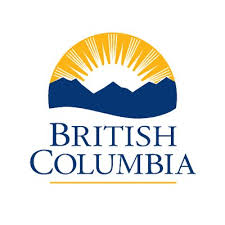
An operational fuel management treatment involving a thin-from-below approach will start this winter in several treatment units, amounting to 22.5 hectares adjacent to the Cranberry Lake residential area.
Removing excess fuel is expected to reduce overall wildfire occurrence, severity and spread, preventing wildfire spreading into the tops of trees, and permit better access for crews responding to a potential wildfire in this area.
A shaded fuel break will be developed as part of this treatment to reduce the risk of wildfire and improve forest resilience. The fuel break will provide an area that will reduce flame lengths and the rate of spread of wildfires approaching the community and surrounding properties. During the development of this fuel break, some dense small stemmed trees will be removed to reduce the overall fuel load in the forest, while retaining enough canopy to shade the ground and prevent future understorey overgrowth.
Crews will remove danger trees, heavy undergrowth, and prune lower branches of remaining trees up to 2 meters. If merchantable timber is produced during this process, it will be decked and sold to offset the costs of this treatment. In areas where high levels of remaining material is anticipated to occur, it will be chipped and removed off site. Remaining material in other areas will be placed in piles no larger than 2 meters tall and 3 meters wide, in locations that will not damage the remaining stand.
These piles will be burnt in accordance with the Ministry of Environment’s Open Burning Smoke Control Regulation, if conditions permit in the following fall, winter, and/or spring. Smoke will be visible in the Cranberry Lake residential area when pile burning does occur. This treatment is expected to mitigate the risk of wildfire to the Cranberry Lake community and provide a safer evacuation route for the public if necessary.
For more information about this project, contact:
Whitney Peters, RFT, Land and Resource Coordinator (WRR)
Sunshine Coast District Office
7077 Duncan Street, Powell River BC, V8A1W1
Email: Forests.SunshineCoastDistrictOffice@gov.bc.ca or Telephone: 604-485-0700
BE PREPARED: REDUCE THE RISK OF WILDFIRE
Landscape-level fuel treatments play a crucial role in enhancing a neighborhood’s wildfire resilience. In the event of a wildfire a treated forest produces less wind-driven embers that could potentially ignite homes. However, it’s essential to recognize that this is just one aspect of the broader strategy.
FireSmarting your home and yard is equally vital to decrease the risk posed by these embers. Achieving wildfire resilience in neighborhoods requires a shared responsibility. The combination of provincial fuel treatments and FireSmart practices applied to homes and properties within a neighborhood provides firefighters with the best opportunities to defend homes during emergency situations.
By addressing both landscape-level fuel treatments and individual FireSmart measures, we collectively strengthen our community’s ability to withstand and mitigate the impact of wildfires.
For further information, reach out to qRD FireSmart Coordinator Marc Albert at firesmart.qrd@gmail.com or (604)-414-7839.
View the full notice from the British Columbia Ministry of Forests